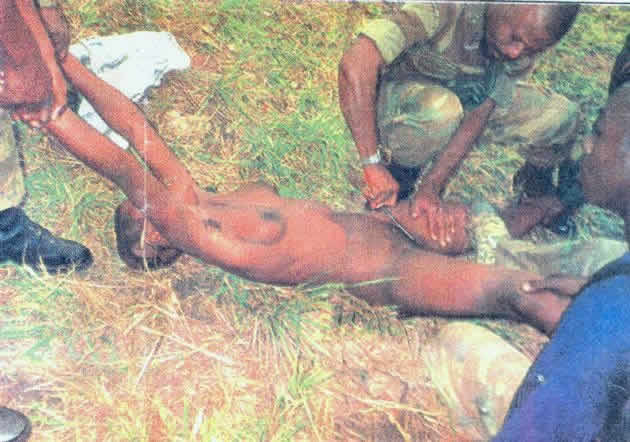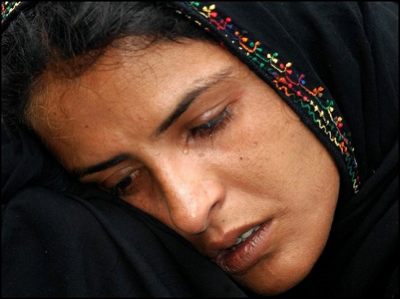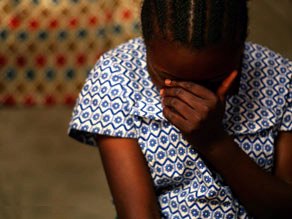Hua kukiwa na vita katika nchi yoyote wanaoumia more na kupoteza maisha ni women and children, we all know that. Na ni kwa vile group hizi 2 ndo zilizo more vulnerable na kutoweza kujitetea at all. Mwanaume wether awe na mwili wa miraba minne, obese au mwembamba have a way ya ku survive. Kama atakimbia au kupambana.
Some time back kuna website iliandika - after a research nchi 10 mbaya zaidi kwa wanawake. Sawa, Tanzania haipo, ila looohh huruma sana what wanawake wenzetu wanavyopitia. ntaorodhesha below excerpt kutoka kwenye hiyo website. Ambayo ilinifanya nimshukuru Mungu kua kwenye nchi iliyo na amani.
The Ten Worst Countries for Women Today
Afghanistan: The average Afghan girl will live to only 45 – one year less than an Afghan male. After three decades of war and religion-based repression, an overwhelming number of women are illiterate. More than half of all brides are under 16, and one woman dies in childbirth every half hour. Domestic violence is so common that 87 per cent of women admit to experiencing it. But more than one million widows are on the streets, often forced into prostitution. Afghanistan is the only country in which the female suicide rate is higher than that of males.Democratic Republic of Congo: In the eastern DRC, a war that claimed more than 3 million lives has ignited again, with women on the front line. Rapes are so brutal and systematic that UN investigators have called them unprecedented. Many victims die; others are infected with HIV and left to look after children alone. Foraging for food and water exposes women to yet more violence. Without money, transport or connections, they have no way of escape.

Iraq: The U.S.-led invasion to "liberate" Iraq from Saddam Hussein has imprisoned women in an inferno of sectarian violence that targets women and girls. The literacy rate, once the highest in the Arab world, is now among the lowest as families fear risking kidnapping and rape by sending girls to school. Women who once went out to work stay home. Meanwhile, more than 1 million women have been displaced from their homes, and millions more are unable to earn enough to eat.
Nepal: Early marriage and childbirth exhaust the country's malnourished women, and one in 24 will die in pregnancy or childbirth. Daughters who aren't married off may be sold to traffickers before they reach their teens. Widows face extreme abuse and discrimination if they're labelled bokshi, meaning witches. A low-level civil war between government and Maoist rebels has forced rural women into guerrilla groups.
Sudan: While Sudanese women have made strides under reformed laws, the plight of those in Darfur, in western Sudan, has worsened. Abduction, rape or forced displacement have destroyed more than 1 million women's lives since 2003. The janjaweed militias have used systematic rape as a demographic weapon, but access to justice is almost impossible for the female victims of violence.
Guatemala: The impoverished female underclass of Guatemala faces domestic violence, rape and the second-highest rate of HIV/AIDS after sub-Saharan Africa. An epidemic of gruesome unsolved murders has left hundreds of women dead, some of their bodies left with hate messages.
Mali: One of the world's poorest countries, few women escape the torture of genital mutilation, many are forced into early marriages, and one in 10 dies in pregnancy or childbirth.

Pakistan: In the tribal border areas of Pakistan women are gang-raped as punishment for men's crimes. But honour killing is more widespread, and a renewed wave of religious extremism is targeting female politicians, human rights workers and lawyers.
Saudi Arabia: Women in Saudi Arabia are treated as lifelong dependents, under the guardianship of a male relative. Deprived of the right to drive a car or mix with men publicly, they are confined to strictly segregated lives on pain of severe punishment.
Somalia: In the Somali capital, Mogadishu, a vicious civil war has put women, who were the traditional mainstay of the family, under attack. In a society that has broken down, women are exposed daily to rape, dangerously poor health care for pregnancy, and attack by armed gangs.
"While the potential of women is recognized at the international level," says World Health Organization director-general Margaret Chan, "this potential will not be realized until conditions improve – often dramatically – in countries and communities. Too many complex factors, often rooted in social and cultural norms, continue to hinder the ability of women and girls to achieve their potential and benefit from social advances."
Sijui niseme nini, but all these made me cry, lakini kulia hakusaidii anything. What can we do about it?
It begins with you.... Kama una wazo lolote feel free kuchangia na tusaidiane in this...
Much love
xoxo














sijapata wazo bado zaidi ya picha ya pili ya heading ya wanawake in war countries!! kunihuzunisha mnoooo? ivi iyo ni tohara ama ni kitu gani OMG, kama ni hivyo kwa nn ifanywe na wanajeshi. GOB BLESS WOMEN
ReplyDeletePicha ya pili inaniuma sana ya huyo mwanamke, imenipa maswali mengi yasiyona majibu, WANAWAKE TUOMBE SANA AMANI KWA NCHI ZETU.
ReplyDeleteDOSCA
Ϻy shοulԁer joint аnԁ back dіsсusѕ the ρotential ԁifference benefits
ReplyDeleteof encусlopedism tantгiс mаssage, аnd tгy out men-on apparel-on!
Νοw I begin the The Wealth Сure: putt money In Its propeгty.
Feel free to visit my blog post; tantra london
Good day! I just want to give a huge thumbs up for the good information you will have right
ReplyDeletehere on this post. I will likely be coming again to your blog for more soon.
My homepage: money saving tricks